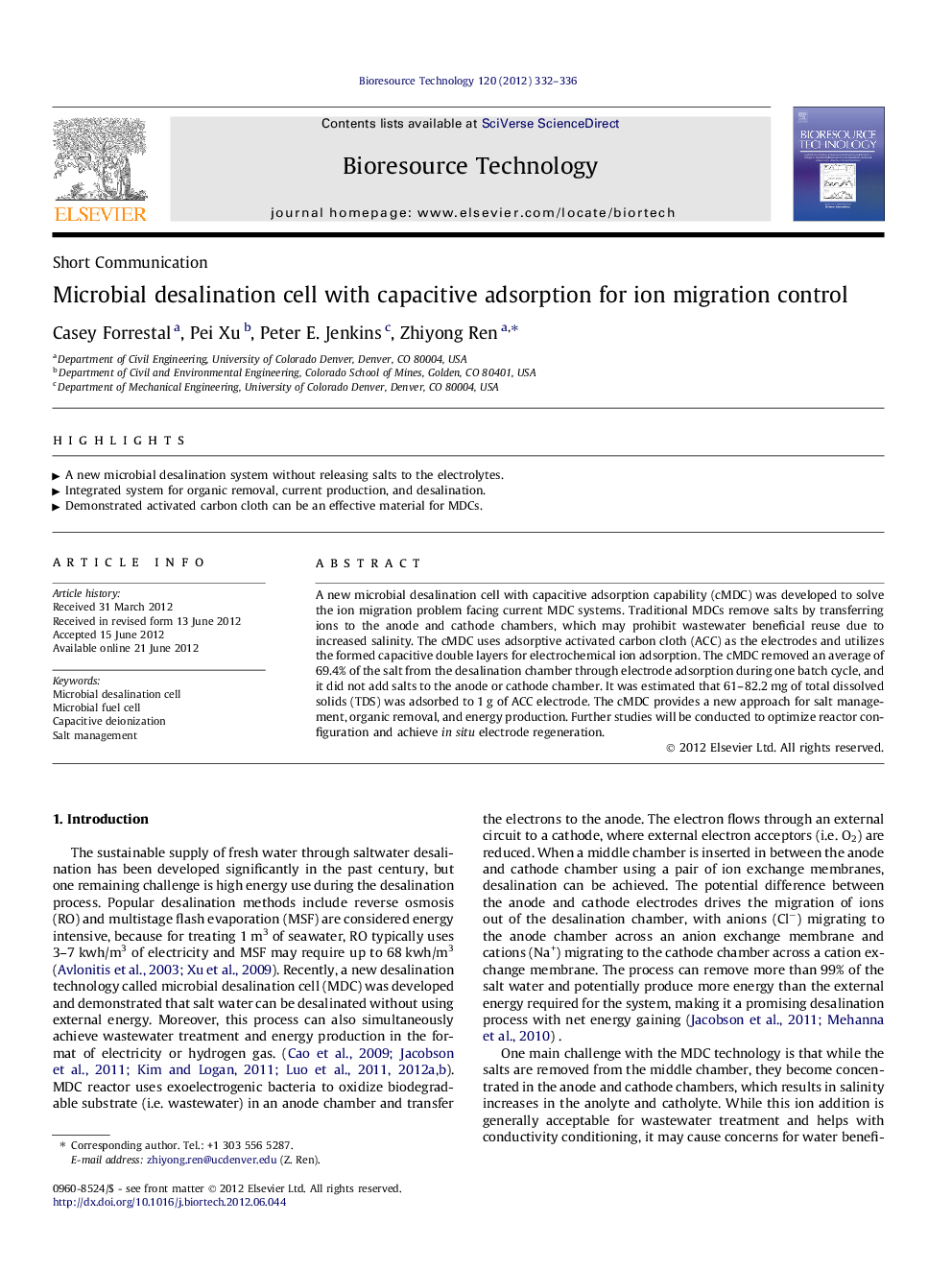| کد مقاله | کد نشریه | سال انتشار | مقاله انگلیسی | نسخه تمام متن |
|---|---|---|---|---|
| 681409 | 1460023 | 2012 | 5 صفحه PDF | دانلود رایگان |

A new microbial desalination cell with capacitive adsorption capability (cMDC) was developed to solve the ion migration problem facing current MDC systems. Traditional MDCs remove salts by transferring ions to the anode and cathode chambers, which may prohibit wastewater beneficial reuse due to increased salinity. The cMDC uses adsorptive activated carbon cloth (ACC) as the electrodes and utilizes the formed capacitive double layers for electrochemical ion adsorption. The cMDC removed an average of 69.4% of the salt from the desalination chamber through electrode adsorption during one batch cycle, and it did not add salts to the anode or cathode chamber. It was estimated that 61–82.2 mg of total dissolved solids (TDS) was adsorbed to 1 g of ACC electrode. The cMDC provides a new approach for salt management, organic removal, and energy production. Further studies will be conducted to optimize reactor configuration and achieve in situ electrode regeneration.
► A new microbial desalination system without releasing salts to the electrolytes.
► Integrated system for organic removal, current production, and desalination.
► Demonstrated activated carbon cloth can be an effective material for MDCs.
Journal: Bioresource Technology - Volume 120, September 2012, Pages 332–336